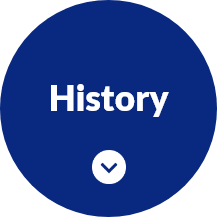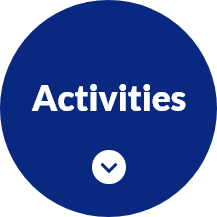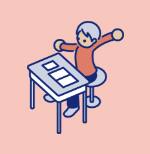Personal Menu
Personal Menu
Added to Favorites
Statement
Based on the statement “Boost your Curiosity”, we continue to support places of learning worldwide.


Support “learning” and boost your “curiosity” towards learning
The origin of learning is curiosity. From curiosity comes interest.
We believe that these are important factors to enrich your life.


Support “learning” and
boost your “curiosity” towards learning
The origin of learning is curiosity. From curiosity comes interest.
We believe that these are important factors to enrich your life.

Vision

A world where anyone can find learning enjoyable
What kind of world is “a world where anyone can find learning enjoyable”?
It could be a world where you can acquire new knowledge, solve problems, expand your interest, or make you want to try new things.
Curiosity makes you want to learn more.
By taking action to learn, reaching a conclusion, learning something new and using that knowledge, comes a new curiosity.
We believe this “chain of curiosity” is what makes learning enjoyable.
However, it can be difficult to keep the chain going on your own.
We are aiming for a world where anyone can find learning enjoyable by boosting the source of learning: curiosity.

History
We define “places of learning” to be the relationships that persons engaged in education have with each other, with Casio providing support to persons who learn, persons who teach how to learn, and persons who develop learning
Casio is engaged in product development that utilizes its particular technologies, with the company considering each of the roles within places of learning while bringing along strong sentiments and unique ideas.
Through its development and offering of products and services, Casio links everyone engaged in education to invigorate places of learning.
Release of Japan’s first scientific calculator, the fx-1
It became possible to easily perform complex scientific calculations.

Release of Casio’s first electronic dictionary model, the EX-word
Users became able to carry a trustworthy source of knowledge around with them.

World’s first graphing scientific calculator, the fx-7000G
Use of this model’s large screen, which made graphs easy to read, led to improved mathematical ability among students in various countries.

Launch of the cloud-based classroom support tool ClassPad.net
Through the combination of learning tools with learning content within a single app, students became able to learn more efficiently.

Release of Japan’s first scientific calculator, the fx-1
It became possible to easily perform complex scientific calculations.

World’s first graphing scientific calculator, the fx-7000G
Use of this model’s large screen, which made graphs easy to read, led to improved mathematical ability among students in various countries.

Release of Casio’s first electronic dictionary model, the EX-word
Users became able to carry a trustworthy source of knowledge around with them.

Launch of the cloud-based classroom support tool ClassPad.net
Through the combination of learning tools with learning content within a single app, students became able to learn more efficiently.


2024 onward
Response to two trends in education
Adaptive learning
Learning optimized for the individual
Active learning
Proactive and interactive deep learning
As for the future of Casio’s education business, our activities will aim to respond to educational trends through our hardware (scientific calculators and electronic dictionaries) as well, with ClassPad.net leading the way.





